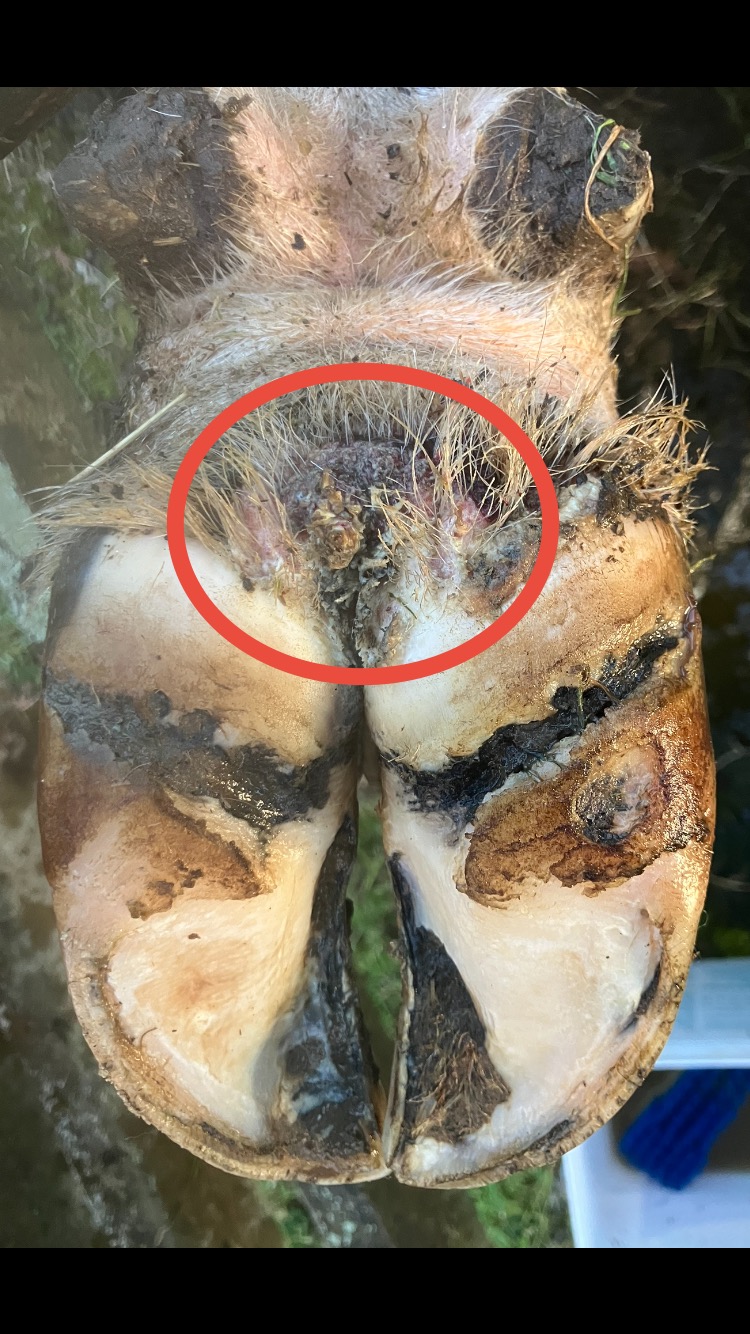A two-year-old Friesian cross steer in the Waikato region recently presented with lameness in his right hind leg. The steer was part of a mob of twelve similar age steers that had arrived on the property as yearlings. Upon examination, the steer showed inflamed, thickened skin between the heel bulbs. There was no interdigital footrot between the claws - leading to a diagnosis of Bovine Digital Dermatitis (BDD).

BDD is a contagious bacterial infection caused by Treponema species. It’s the most important infectious cause of lameness in cattle worldwide, first identified in Italy in 1974 and diagnosed in New Zealand dairy herds in 2004. Since then, it has spread across all major dairy regions, including Waikato and King Country. One study in Taranaki found 2/3 of 224 herds examined had at least one cow with BDD.
BDD typically affects the back feet and causes damage to the skin between the heel bulbs or along the coronary band.
Wet, muddy conditions—common in the Waikato region—combined with faecal contamination on races, yards, and feedpads, significantly increase the risk of infection. Infected cattle can spread BDD quickly, making quarantine and biosecurity essential and checking stock before arriving on-farm are useful preventative measure.
In the case above, the steer was treated with:
Early diagnosis and treatment are crucial to prevent herd-wide outbreaks.
To reduce the risk of BDD on your farm:
If you're farming in Ōtorohanga, Te Awamutu, Putaruru, Tokoroa, Cambridge, Hamilton, or anywhere in Waikato or King Country, contact your local Vetora clinic. Our experienced vets can help you: